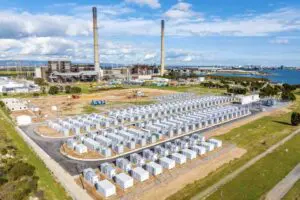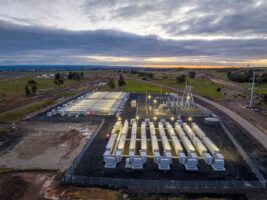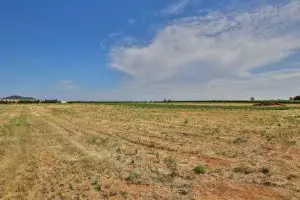The Tesla big battery at Hornsdale in South Australia pulled in revenue of €18 million ($A29 million) in calendar 2018, well ahead of the expectations of its owner and operator, the French renewable energy developer Neoen.
In its first annual revenue declaration, made after its stock exchange listing late last year, the Paris-based Neoen says the performance of what is officially known as the Hornsdale Power Reserve was ahead of expectations “owing to its technical characteristics,, particularly its highly responsive approach.”
The performance of the 100MW/129MWh lithium-ion battery – still the world’s biggest – has surprised all, and delighted many, with its speed, accuracy, and versatility, and has earned the praise of the Australian Energy Market Operator, which sees it as a valuable resource in maintaining grid security and reliability.
Neoen said the battery’s revenues were made up of €2.7 million ($4.2 million) in fixed revenue from the AEMO, reflecting HPR’s availability as a contingency storage capacity provider. This is the nature of the contract negotiated with the previous Labor state government.
There was a further €15.2 million ($A24 million) in revenue generated by the two battery-related merchant activities, i.e. the sale of ancillary grid services (FCAS) and arbitrage. AEMO noted last week that the FCAS revenues, which it tracks, totalled more than $4 million for the fourth quarter alone.
The financial performance of the Tesla big battery, as well as its technical performance, is of great interest to the energy market mainly because of its pioneering status, and because many of the services that it and other batteries can provide are not reflected, or rewarded, in existing market design.
Another six grid scale batteries have since joined the grid in Australia – at Dalrymple North, Ballarat, Gannawarra and Cooktown on the main grid, and at Mt Newman and Alice Springs on smaller grids. Another two are being built at Lake Bonney and Lincoln Gap wind farms, and at Bulgana in Victoria and the Kennedy wind-solar-battery park in Queensland, and many more are planned.
Still, making money remains a challenge. AEMO boss Audrey Zibelman said this week that the investment case for batteries was more difficult because the market did not deliver revenues for its services.
The Tesla big battery is still derided by conservatives generally, and the federal Coalition government in particular, who have variously compared it to the Big Banana, the Kardashians, and the short duration of its power injections into the grid.
The comments show a complete misunderstanding of the battery’s operations and its assets. It has punctured a gas cartel in South Australia that controlled and gamed the local FCAS market, and is now a front-line asset for AEMO in protecting the local grid in case of major interruptions, ass it successfully demonstrated last August.
“HPR’s excellent performance demonstrated the benefits of Neoen’s strategy of continuing to develop energy storage solutions across all its markets, either to complement the projects it operates (“behind the meter”) or connected directly to the grid,” the company said in a statement.
It is currently adding three more storage facilities, including at the Bulgana wind farm under construction in Victoria, which will supply 100 per cent renewables to the country’s biggest vegetable glass-house, and at Azur (France) and Capella (El Salvador).
Overall revenue for Neoen jumped 63 per cent to €227 million, reflecting the growth of its operating asset base in Australia, which includes the Hornsdale wind farm, three solar farms in western NSW and the newly opened Colleambally solar farm, still the largest single solar farm in Australia.
Just over half its revenues come from Australia, with Europe accounting for 40 per cent and the rest from the US.
President and CEO Xavier Barbara said Neoen performed very well in 2018—”a year marked by both the success of our IPO and very strong expansion in our business. Not only is the revenue we are reporting today substantially higher than last year—it is also very robust.
“We hold onto assets for the long haul, which gives us highly recurrent revenue streams, and possess long-term power purchase agreements with prime counterparties. Thanks to our tight cost control, we are reiterating our EBITDA guidance of €170 million to €175 million for 2018.










